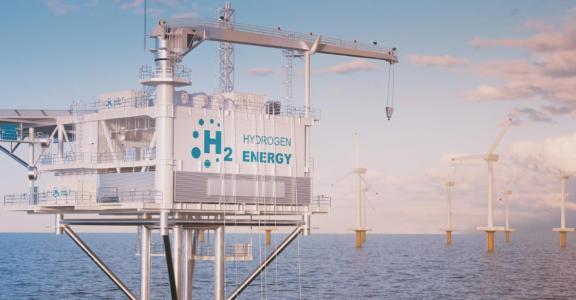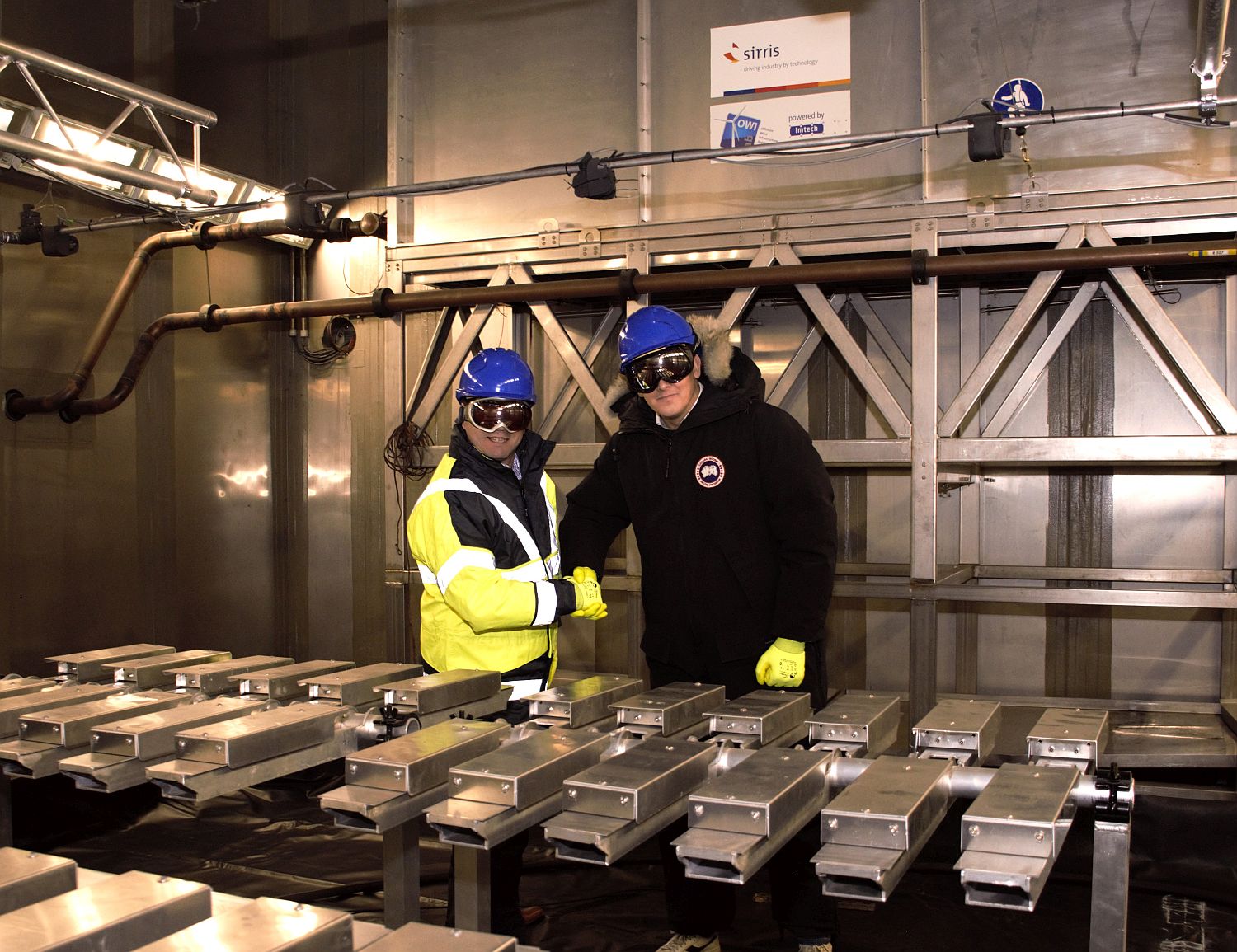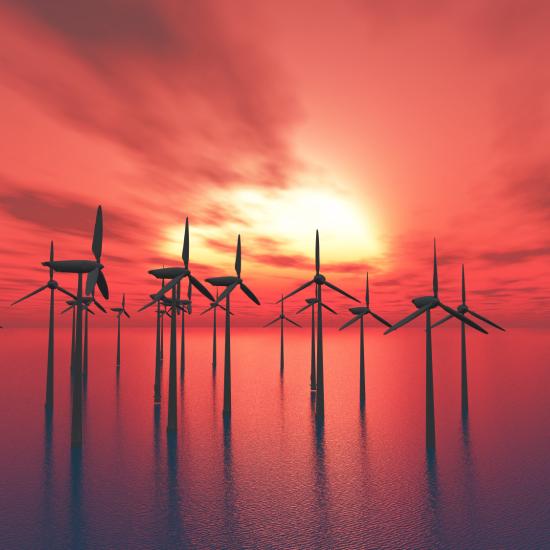Meet the forerunners in renewable energy
On 5 December 2023, Sirris and Agoria’s Energy Technology Club are organising the first in a series of events focusing on the energy transition market developments in the Nordic and Baltic countries. We asked Pieter Jan Jordaens (Sirris) and Pieter-Jan Provoost (Energy Technology Club, Agoria) to tell us more about this exciting market.
Why this region?
Pieter-Jan Provoost, Club Manager Energy of Energy Technology Club, Agoria: “The Nordic region, consisting of Norway, Sweden, Finland, Denmark, and Iceland, is a leader in renewable energy. These countries have been at the forefront of renewable energy since the beginning of the 20th century. Moreover, there are quite interesting developments in the utilisation of this renewable energy to produce green hydrogen and use this input to manufacture green steel.”
“When looking at the Baltics, the Russian invasion in Ukraine was a game changer. Already in 2018 – because of energy security reasons – they decided to synchronise their electricity grids with the European continent and agreed to connect to the European grid via Poland. The invasion only accelerated this project, which was originally planned to be fully completed by February 2025, so much that, in an emergency situation, the grids could be linked up now already. This has also accelerated the plans for the Baltic countries to pursue their offshore wind potential.”
“In 2022, Belgium, the Netherlands, Germany and Denmark, announced an agreement to increase the North Sea’s wind power capacity tenfold to 150 gigawatts (GW) by 2050, to help the EU achieve climate goals and avoid Russian hydrocarbons. A few months later, eight EU countries bordering the Baltic Sea - Denmark, Estonia, Finland, Germany, Latvia, Lithuania, Poland and Sweden – agreed in the Marienborg Declaration to increase offshore wind power generation capacity sevenfold, to 20 GW by 2030. This in order to accelerate the green transition and decrease dependency on Russian energy.”
“The natural conditions are favourable: because the Baltic Sea is shallow, has low wave heights and neglectable tides, it provides very good prerequisites to install large offshore wind power devices. It is estimated that the Baltic Sea holds a potential of 93 GW of offshore wind energy. The full potential of offshore wind power can be exploited if the countries around the Baltic Sea established large transnational meshed offshore wind grids based on the same standards and methodology.”
During the event, attention will turn to Finland. What makes this market so interesting?
Pieter Jan Jordaens, Manager Energy Transition & Program manager Offshore Wind at Sirris: "One of the Baltic countries involved is Finland, who wants to have its first large-scale offshore wind farm online by 2027 and another by 2028. It already has an onshore wind capacity of 5,7 GW, but the 42 MW Tahkoluoto wind farm in the Gulf of Bothnia - the northern part of the Baltic Sea - is the only operational offshore wind farm it has so far. The country wants to become self-sufficient in electricity and aims at decarbonisation, while increasing energy production to answer the growing demand, through (new) sources, such as offshore wind, to improve its energy security."
"Finland benefits from the waters close to its shores being shallower than is the case for other Baltic countries and as most of its offshore waters offering suitable conditions for offshore wind development, the opportunity is huge."
"While some developers are focusing on the territorial waters close to Finland’s coast, others are targeting areas further out to sea: Finland’s territorial waters have the advantage of being closer to the shore, meaning water is shallow and connection costs to land are lower, but further territories are more attractive from a depth and seabed point of view, and might come with greater freedom of manoeuvre."
"Target areas are the Bothnian Sea (the southern portion of the Gulf of Bothnia that separates Finland and Sweden), the shallower Bay of Bothnia (its northern part) and the territorial waters around the Åland Islands, which at their own could host up to 10 GW of wind power. Water depth and seabed soil conditions around the islands are also suited for offshore wind and Åland also benefits from less severe ice conditions than for example the Bay of Bothnia."
The energy transition covers more than just offshore wind. Is there also potential for hydrogen?
Pieter-Jan Provoost: "Of course. As Finland has a population of no more than just over 5 million, its large-scale plans for offshore wind offer room for more opportunities than merely being self-sufficient: it is paving the way to using wind energy for (offshore) production of green hydrogen, which can be used to replace fossil fuels and can be exported. Finland believes it has the capacity to produce at least 10% of the EU’s emissions-free hydrogen in 2030."
"This ambition is right up the EU’s hydrogen alley. Development of hydrogen infrastructure will be a prerequisite for renewable hydrogen market creation and market integration. The European Hydrogen Backbone (EHB) initiative, which consists of a group of 33 energy infrastructure operators, aims to accelerate Europe’s decarbonisation journey by defining the critical role of hydrogen infrastructure – based on existing and new pipelines – in enabling the development of a competitive, liquid, pan-European renewable, and low-carbon hydrogen market. The initiative seeks to foster market competition, security of supply, security of demand, and cross-border collaboration between European countries and their neighbours."
"In 2022 a new hydrogen project in the Baltic area was announced: the development project Baltic Sea Hydrogen Collector (BHC) is exploring the possibilities of building a new, large-scale offshore hydrogen pipeline infrastructure connecting Finland, Sweden and Central Europe, to enable the production and storage of clean and sustainable hydrogen, to secure more energy for the Nordics and Europe."
Earlier this year, Belgium started building the Princess Elizabeth energy island, a world’s first. It seems other countries are following our lead?
Pieter Jan Jordaens: “Correct! For instance, the parties involved in the BHC project are Finnish and Swedish transmission system operators, along with offshore wind developers. BHC aims to connect Finland and Sweden to Åland and Germany by 2030. The focus is especially on enabling the utilisation of wind power in Finland’s maritime areas and the development of the market in the Baltic Sea region. The offshore project may also be connected to other energy islands in the region, such as Gotland and Bornholm in Sweden and Denmark. It will leverage offshore wind potential in Bothnia Bay and the Baltic Sea, fostering a robust hydrogen market and connecting supply and demand."
"In this context Copenhagen Infrastructure Partners, Flexens, and Lhyfe have formed a partnership for the development and construction of an integrated energy island solution enabling large-scale offshore wind, green hydrogen production and other locally anchored, value-creating activities on Åland."
"The ambition of the Åland Energy Island project is to develop large-scale hydrogen production on Åland, integrated with gigawatt-scale offshore wind in Åland waters, to be used both on Åland and in the wider European region, thereby supporting Åland’s and EU objectives for energy security and decarbonisation. Integrating offshore wind and green hydrogen production will provide Åland with a route to market for the untapped wind resources around the islands, placing Åland as a key player in the green transition for the wider region."
Keen to be among giants?
The Nordic region, consisting of Norway, Sweden, Finland, Denmark, and Iceland, is a leader in renewable energy. For the rest of Europe, the developments in Northern Europe are very interesting in many ways. That is why Sirris and Agoria Energy Technology Club are organising a unique event with a focus on market opportunities in the Nordics and Baltics for offshore wind and hydrogen.
We will examine which factors have contributed to the likes of Finland’s rise to the top of clean energy generation and the opportunities that lie ahead for the region for offshore renewables.
We will spotlight the planned offshore wind and hydrogen production and transport infrastructure projects and their advancements,the market growth in countries such as Norway and Finland, but also look at Lithuania for example, and how they are setting the pace with their rich wind capabilities. We will highlight the engineering challenges in these emerging markets and how our Belgian technology industry is well placed to jump in and contribute.
Key market opportunities we will explore during our Nocturne
- The Nordics' role in offshore wind power to produce electrons and molecules (hydrogen) and insights in the planned projects towards 2030.
- Insights into the rapid growth of (offshore) wind power and hydrogen projects across the Nordic countries, emphasising Sweden's and Finland's advancements.
- The developments in the Baltic Sea and the lessons learned in this region.
- The energy trilemma faced by the Nordic and Baltic regions and measures to ensure security, affordability, and sustainability in the green transition.
- Geopolitical dynamics and their influence on energy security and market opportunities, particularly in light of recent events involving Russia and Ukraine.
- Offshore wind opportunities towards 2050 in Iceland and Greenland.
Join us at De Ark Antwerpen on our Nocturne on 5 December 2023: register now!
Experience it live on our meet & peak mission to Finland
You can’t wait to see it for yourself? From 11 to 14 March 2024 we are going on a meet & peak mission to Finland, to see and learn more about the energy transition in the Nordics and Baltic Sea with a particular focus on offshore wind and hydrogen. Dive into the latest developments in Finland, exploring state-of-the-art energy solutions, the surge in arctic offshore wind investments and the promising blend of green hydrogen production with offshore/onshore endeavours. Seamlessly aligned with the Vaasa Energy Week and aligned with Flanders Investment & Trade, our event promises exclusive visits to leading companies, stakeholders and developers, offering an unparalleled deep dive into the heart of Northern Europe's energy revolution.
During the Nocture, Sirris and Agoria will share the programme of the meet & peak mission to Finland. We hope you’ll join us!
Contact us for further information:






